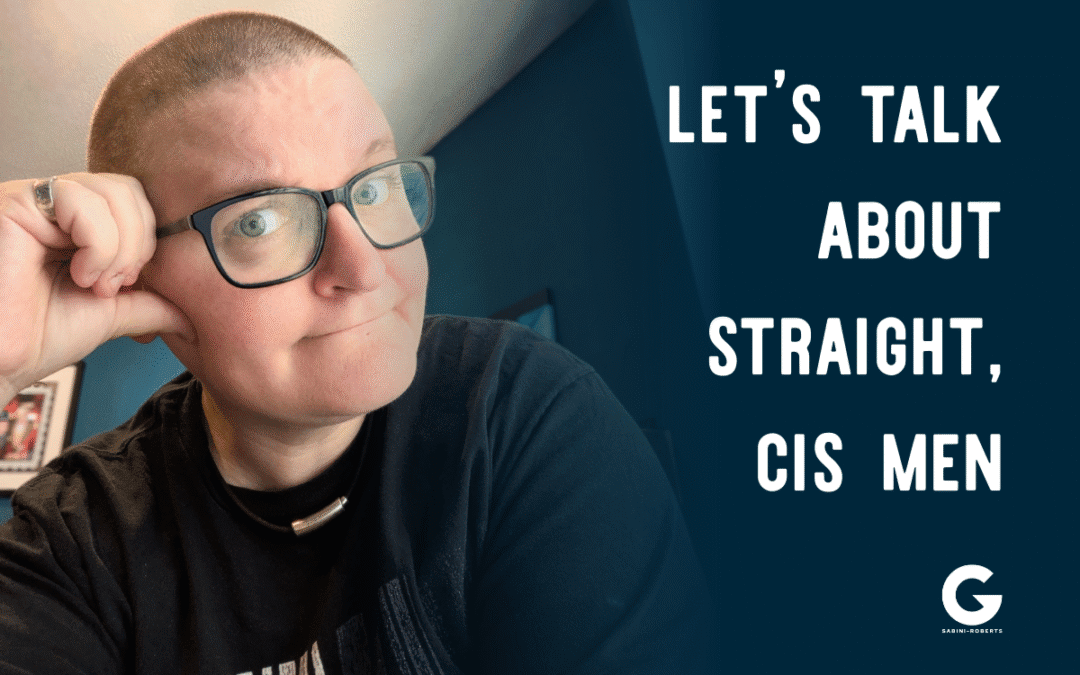As a queer, trans person I never thought I’d find myself defending the rights of straight, cis men as often as I do.
But here’s a story I see play out again and again.
It begins with someone creating a group, event, or space with a clear intention: a space that feels safe, nurturing and supportive. They envision a space where everyone is heard, where no one dominates, where mutual support and community can thrive.
And for this story, this someone is almost always a cis woman.
One of the first things they do is decide that, in order to achieve their ideals for the people they see needing it most, they will make their thing a women-only thing. They can recall moments when they, themselves, didn’t feel safe or supported, or where they were talked over, or sidelined, and more often than not, that experience was due to the presence of a man. There are thousands of women-only groups built on this exact foundation.
But that’s not where this story ends because the person creating the space has a clue, and so their women’s space is, of course, inclusive of trans women.
Then comes the day when they are asked what their position is on the inclusion of non-binary people. And because they remember the times they felt excluded, often by men, and they recognise that many NB folks – especially those who were assigned female at birth – share many of the same experiences and challenges as cis women, they decide it makes sense to include them too.
But can we draw a line at AFAB (assigned female at birth) nonbinary people without asking intrusive questions about people’s bodies? Well, no, we can’t, so to manage that well, this now has to become a space for women and non-binary people.
Let me take a quick sideline here to remind you that as soon as you open up a women’s space to people who are not women, it stops being a women’s space. But I have written about that before – yell if you want links to where – and this is a post about men, so let’s continue…
Because once this kind, inclusive woman has realised that her space now hosts people of all genders apart from men, another question arises. What about that gentle, aware trans man who experiences marginalisation daily and deeply needs a space like this, who poses no threat to anyone’s safety and would be an asset to the community?
The result: “This is a space for anyone who isn’t a straight, cis man.”
We now have a problem. What you’re actually saying is: this space is safe for everyone except straight cis men.
And I know that you might be reading this now and thinking ‘Well yes, that IS what we’re saying and that’s kinda the point’… But I’m urging you to stop and think about that for a minute.
First of all, this position casts all straight, cis men as dangerous. And that isn’t fair.
There are straight cis men who are deeply compassionate, self-aware, feminist, and capable of co-creating a safe and nurturing environment. There are also people of other genders who are loud, dominating or toxic in group spaces.
Defining a space by gender doesn’t guarantee safety or the kind of culture we want to create. Because it’s not really about gender. It’s about behaviour.
As a founder or facilitator, you have the power to set the tone, model the values… all that good stuff. You get to define and uphold the boundaries that protect and shape your space.
Most of the time when we create spaces like this, it’s because we want change. Yes, for the individuals in the room but also for the culture we live in. But who currently holds the most power in this culture?
It’s straight, cis, white, able-bodied, neurotypical men.
How are they meant to learn what it feels like to be truly held in community…
To honour others’ boundaries…
To witness lived experiences different to their own…
To share power… If we don’t find ways to include them?
And as for the men who are doing the inner work, who are challenging themselves and unpicking their privilege, who embrace the discomfort of being around and learning from people who are not like them…
I can’t speak for you, but I absolutely want those chaps in my spaces.
That’s not to say we don’t need women-only or queer-centred or marginalised-gender-led spaces. There are lots of situations where have exclusive spaces is really important. We do absolutely need all of them too. But we don’t need ONLY them.
Over the last few weeks I’ve had the pleasure of finding myself in several incredible rooms full of glorious people working on themselves and their businesses. There wasn’t a single person in any of those rooms who didn’t hold more than a vision for the change they want to create for themselves, but also one of the world they want to be part of curating.
They were all beautiful spaces.
But the percentage of people in those rooms who were cis men were in the single digits. (I only can’t speak for the straight part because I didn’t speak to enough of them.)
Fixing this has to be a collective effort. Being the most privileged person in a room can be damn uncomfortable once you’re aware of it. It’s not an easy sell, inviting people in to sit in that role, but it’s one we’re all going to have to get better at doing if we really want to live by the mantra that every voice matters and every human deserves care.
So here’s to the cis men, especially the straight ones. I see you, I value you, and I want more of you.
To those you of who are automatically excluding men, I hope this post has made you think a bit more about why you do it and whether it really is the right choice for you and your space.
By all means, let’s chat away in the comments.
If you’d like help to think a bit more about this stuff, I’ve made my book ‘When Is A Women’s Group Not A Women’s Group’ free to everyone as a pdf since the Supreme Court ruling. You might want to give it a read.

